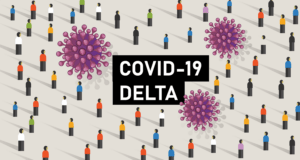10/25/21—With COVID-19 still a threat, returning to the workplace has proven a challenging effort. Prevention with social distancing, hand washing, and face coverings can help combat COVID-19 spread, promoting continued productivity within your company. However, contact tracing is another helpful tool that can track an infectious disease within your workforce and help stop the spread, according to the Centers for Disease Control and Prevention1 (CDC). Thanks to digital contact tracing, the process has been streamlined in many ways, but is not immune to human error. There are common missteps that can occur, which lower effectiveness.
When implementing contact tracing in your company, discrimination is one thing to be mindful of. Some digital methods require employees download a program onto their personal cellphone, which can be discriminatory, as some employees may not have cellphones for personal or financial reasons. This also leads into another misstep with contact tracing, which is concerns over privacy. “We must ensure that key elements of privacy are not abused or disregarded,” says Bernardo Mariano Junior, Director of the Department of Digital Health and Innovation and Chief Information Officer of the World Health Organization (WHO). “The key is finding frameworks where data privacy and data sharing can coexist in ways that add to public health responses.”2
Privacy concerns can make people wary of using contact tracing programs, as tracking data, use of private health information and usage of personal cellphones, all bring up issues of employee privacy. The need to protect privacy can lead employees to decline contact tracing, leaving a gaping hole in your efforts. To alleviate concerns, it’s key to use a digital tracing program like AlertTrace, which does not utilize GPS location tracking, anonymizes data, and requires no personal phone use. With AlertTrace, data is encrypted, and only administrators will be able to identity a positive case and notify them accordingly. Location is never tracked, instead AlertTrace assigns employees small wearables which only record when a contact is made with another wearable, eliminating any fears of GPS location tracking.
Improper implementation and adherence are other issues that can make contact tracing less effective and occur when full transparency is not used.3 When adding contact tracing to your company, inform all employees how the process will work, the importance of it, and how to practice it on their end. With AlertTrace employees wear Minis about the size of a U.S. quarter, which then track any contacts within a certain distance and record them accordingly. Employees need to wear Minis as soon as they enter the workplace, and ensure they are left there at the end of the day for battery conservation and charging. Transparency can also assuage any concerns or questions, such as privacy issues, with your contact tracing program, as well as assure employees that their health is being made a priority.
Failure to act quickly and report properly are also mistakes that can be made in contact tracing. When a positive case is identified, close contacts need to be informed fast, so they may isolate and test before returning to work. Failure to respond quickly creates extra time where additional contacts can be made, and more of your workforce compromised. It’s also essential to maintain privacy standards, to not only protect employee privacy, but ensure your organization adheres to legal requirements. According to the U.S. Equal Employment Opportunity Commission, employers must maintain all information about employee illness as a confidential medical record in compliance with the ADA (Americans with Disabilities Act).4 This means that a positive case must remain anonymous when informing close contacts. Data should never be shared with regards to identifying anyone who has tested positive or as a close contact, apart from notifying said affected persons in a private setting.
Contact tracing to protect your workforce is a multi-layered approach to lessening spread. Along with contact tracing, employees should continue practicing other prevention methods,1 including social distancing, hand washing and the use of Personal Protective Equipment (PPE), which includes face masks. Many digital contact tracing programs can assist this effort, with additional features. AlertTrace offers customizable distance settings, with alerts to tell employees when they are not maintaining a set social distance. AlertTrace can also identify areas in your company where employees are often in larger numbers, to help break up hot spots that can be breeding grounds for spreading infectious diseases.
Eliminating contact tracing mistakes increases your organization’s ability to mitigate COVID spread, while protecting employee privacy and adhering to legal requirements. AlertTrace contact tracing aims to help eliminate any mistakes and streamline contact tracing in numerous ways. With anonymized data, only admins have access to data and identification when needed. Our Minis require no usage of employee cell phones, and zero GPS-tracking, helping protect privacy, while still allowing employers to collect necessary contact tracing data. AlertTrace is also simple to implement, with an easy plug-in-play installation and small wearables that employees simply attach to their persons upon entry.
Contact us today to learn more about how AlertTrace can help your organization reopen and stay open safely in the current COVID-19 climate.
…
1 Centers for Disease Control and Prevention. (n.d.). Contact tracing. Centers for Disease Control and Prevention. Retrieved October 25, 2021, from https://www.cdc.gov/coronavirus/2019-ncov/easy-to-read/contact-tracing.html.
2 World Health Organization. (n.d.). Tracking covid-19: Contact tracing in the Digital age. World Health Organization. Retrieved October 25, 2021, from https://www.who.int/news-room/feature-stories/detail/tracking-covid-19-contact-tracing-in-the-digital-age.
3 Symmank, R. (n.d.). Coronavirus Contact Tracing mistakes. Coronavirus Contact Tracing Mistakes. Retrieved October 25, 2021, from https://www.iofficecorp.com/blog/dont-make-these-coronavirus-contact-tracing-mistakes.
4 What you should know about covid-19 and the Ada, the Rehabilitation Act, and other EEO laws. U.S. Equal Employment Opportunity Commission. (n.d.). Retrieved October 25, 2021, from https://www.eeoc.gov/wysk/what-you-should-know-about-covid-19-and-ada-rehabilitation-act-and-other-eeo-laws.




